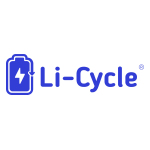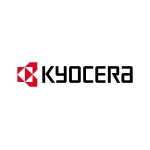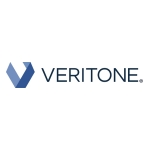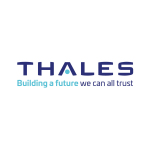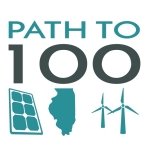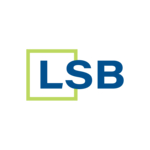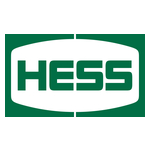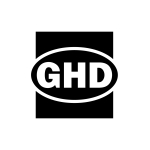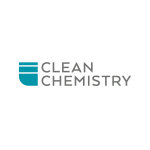Strong first quarter performance delivers record Adjusted EBITDA and distributable cash flow, up 9% and 15% respectively, over first quarter 2020 generating significant positive free cash flow
Quarterly results highlighted by increased commodity prices and operational reliability in the face of extreme winter weather providing producer customers with strong flow assurance and improved net-backs
Executed a series of transactions that enabled First Reserve to exit its ten-year investment in Crestwood and allows for the transition to a publicly elected Board of Directors, further enhancing corporate governance
HOUSTON--(BUSINESS WIRE)--Crestwood Equity Partners LP (NYSE: CEQP) (“Crestwood”) reported today its financial and operating results for the three months ended March 31, 2021.

First Quarter 2021 Highlights1
-
First quarter 2021 net loss of $38.3 million, compared to net loss of $23.4 million in first quarter 2020
-
First quarter 2021 Adjusted EBITDA of $165.4 million, an increase of 9% compared to $151.4 million in the first quarter 2020
-
First quarter 2021 distributable cash flow (“DCF”) to common unitholders of $108.4 million, an increase of 15% compared to first quarter 2020; The first quarter 2021 coverage ratio was 2.8x
-
First quarter 2021 free cash flow after distributions of $63.6 million
-
Ended March 31, 2021 with approximately $2.6 billion in total debt and a 4.2x leverage ratio; Crestwood has substantial liquidity available under its $1.25 billion revolver with $530 million drawn as of March 31, 2021
-
Announced first quarter 2021 cash distribution of $0.625 per common unit, or $2.50 per common unit on an annualized basis, payable on May 14, 2021, to unitholders of record as of May 7, 2021
Recent Highlights
-
On March 30, 2021, Crestwood closed the first step of the previously announced strategic transactions with First Reserve; in the transactions First Reserve completed a private placement of six million common units for proceeds of $132 million and Crestwood purchased the general partner interest and 11.5 million common units for $268 million, facilitating First Reserve’s complete exit of its investment in Crestwood; In total, these transactions drive substantial accretion to Crestwood’s distributable cash flow per unit and allows for Crestwood’s transition to a publicly elected Board of Directors
-
The Board of Directors authorized a $175 million opportunistic common and preferred unit repurchase program through December 31, 2022 that will provide additional flexibility for increased return of capital to investors, once the company’s long-term leverage target is met
-
On April 21, 2021, closed on the redemption of the remaining $288 million of 6.25% senior notes due 2023 at par utilizing borrowings on the $1.25 billion revolving credit facility; Crestwood’s nearest term senior note maturity is now 2025
-
As a result of the strategic transactions, strong first quarter results and an increasingly positive commodity price outlook for 2021, Crestwood provided revised guidance including full year Adjusted EBITDA in a range of $575 million to $625 million, distributable cash flow of $335 million to $385 million, and free cash flow after distributions of $130 million to $180 million
Management Commentary
“I am pleased to announce record first quarter 2021 results with Adjusted EBITDA of $165.4 million and distributable cash flow of $108.4 million, increases of 9% and 15%, respectively, over the first quarter of 2020, leading to free cash flow after distributions of $63.6 million,” commented Robert G. Phillips, Chairman, President and Chief Executive Officer of Crestwood’s general partner. “These results were largely achievable because of the tireless efforts of our dedicated operations teams that maintained strong flow assurance through our gathering systems, processing plants and storage facilities despite the unprecedented challenges presented by Winter Storm Uri. Additionally, with the significant increase in commodity prices during the quarter, both Crestwood and our producers benefitted through increased margins and net-backs, respectively. As a result, we took advantage of these higher and more stabilized prices to hedge a portion of our commodity exposure throughout 2021 and lock in higher margins on several of our assets, giving us increased confidence in our revised 2021 guidance.”
Mr. Phillips commented further, “In addition to a strong operating quarter, we completed a historic transaction by arranging for the acquisition of all of First Reserve’s general partner and limited partner interests, allowing our sponsor to exit Crestwood after a ten-year partnership with management. This series of transactions not only improves Crestwood’s financial and strategic flexibility in the future, but greatly simplifies our capital structure and transitions Crestwood to an independent MLP with an elected Board of Directors. Given our strong first quarter performance and improving market fundamentals in 2021, Crestwood is on-track to achieve its revised annual guidance, continue to maintain our distribution, reduce debt to our target levels and opportunistically execute our repurchase program which we believe will further drive long-term value to our unitholders.”
First Quarter 2021 Segment Results
Gathering and Processing (G&P) segment EBITDA totaled $119.5 million in the first quarter 2021 compared to $119.4 million in the first quarter 2020. First quarter 2020 excludes an $80.3 million goodwill impairment related to Crestwood’s Powder River Basin operations. Strong first quarter results were driven by higher favorable commodity prices that had a positive impact on Crestwood’s percent-of-proceeds (POP) contracts in the Bakken and percent-of-index (POI) contracts on the Barnett system, as well as year-over-year volume growth of 13% and 17% for Arrow natural gas gathering and processing, respectively. As part of Crestwood’s on-going conservative risk management practices, the company opportunistically hedged approximately 50% of its POP and POI exposure at favorable commodity price levels for the remainder of the year which drives incremental upside from its original budget price expectations. During the first quarter 2021, Crestwood had continued producer rig activity in the Bakken, Powder River Basin, Delaware Basin and Barnett shale which is expected to result in strong volume growth beginning in the second quarter 2021.
Storage and Transportation (S&T) segment EBITDA totaled $20.4 million in the first quarter 2021, compared to $13.7 million in the first quarter 2020. First quarter 2021 EBITDA excludes a $119.9 million impairment recorded by Crestwood’s equity investment in Stagecoach Gas Services (“Stagecoach”), while first quarter 2020 EBITDA excludes a $4.5 million impairment recorded by Crestwood’s equity investment in a rail terminal in the Powder River Basin. First quarter 2021 natural gas storage and transportation volumes averaged 2.3 Bcf/d, compared to 1.8 Bcf/d in the first quarter 2020. In the first quarter 2021, Stagecoach has continued to see record setting transportation volumes as natural gas production in Northeast Pennsylvania continues to increase due to favorable economics. This increased demand has resulted in both the transportation and storage assets reaching nearly 100% contracted capacity. At the COLT Hub, first quarter 2021 rail loading volumes were 52 MBbls/d as the facility benefited from increased activity due to ongoing uncertainty around the Dakota Access Pipeline (“DAPL”). The Tres Palacios facility in south Texas significantly exceeded internal expectations during the first quarter 2021 driven primarily by the effects of the extreme weather from Winter Storm Uri that drove an increase in natural gas withdrawals across the state of Texas in mid-February. As a result of prior winterization efforts, the 35 Bcf natural gas storage facility located 60-miles southwest of Houston was able to maintain operations during the storm to meet all primary firm customer withdrawal requests for the duration of the storm.
Marketing, Supply and Logistics (MS&L) segment EBITDA totaled $30.5 million in the first quarter 2021, compared to $26.0 million in the first quarter 2020. All periods exclude the non-cash change in fair value of commodity inventory-related derivative contracts. During the first quarter 2021, Crestwood’s gas and crude marketing teams benefitted from increased product demand and volatility in commodity prices as a result of extreme winter weather conditions. The NGL marketing and logistics business continued to benefit from consistent residential demand and expects to see increases in commercial demand and refinery utilization as economic re-openings begin to occur across the country. Over the last twelve months, the NGL business has fully integrated and optimized its larger asset base and operations after the Plains acquisition in April 2020, and as a result of a full year of ownership and consistent customer relationships, has been able to capture increased market share during the 2021 re-contracting season.
Combined O&M and G&A expenses, net of non-cash unit-based compensation, in the first quarter 2021 were $49.2 million compared to $56.9 million in the first quarter 2020. The decrease in expenses in first quarter 2021 was due to Crestwood’s permanent cost reduction efforts to streamline its operations during the second quarter 2020.
First Quarter 2021 Business Update and Outlook
Bakken
During the first quarter 2021, the Arrow system averaged crude oil gathering volumes of 100 MBbls/d, natural gas gathering volumes of 134 MMcf/d, and produced water gathering volumes of 82 MBbls/d. During the quarter, extreme winter weather negatively impacted volumes on the Arrow system as producers experienced freeze-offs and shut-in production due to record low temperatures, offset by favorable commodity prices on Crestwood’s contracted POP exposure. There are currently two rigs running and two completion crews operating on acreage dedicated to Arrow which are expected to drive 10 to 15 new three product and 10 to 15 water-only well connections in the second quarter. Crestwood continues to expect 45+ three product wells to be connected in 2021 in the current commodity price environment.
During the first quarter, Crestwood invested $4.3 million in the Bakken which was primarily comprised of capital to complete the southern expansion of Arrow’s produced water gathering infrastructure. This strategic growth project provides critical produced water gathering infrastructure to Enerplus Corporation (“Enerplus”) as well as support for Enerplus’ sustainability initiatives to re-use produced water in completion operations. For the remainder of 2021, capital investments in the Bakken will remain focused on the enhancement and expansion of the produced water gathering system and incremental natural gas compression projects to support producer development plans.
DAPL
Crestwood continues to actively monitor the legal proceedings on DAPL and remains well-positioned to manage its Bakken operations under any potential outcome for the pipeline. At current basin production rates of approximately 1.2 million barrels of crude oil per day, there is more than adequate alternative crude oil pipeline and crude-by-rail takeaway capacity to provide operators flow assurance to premium markets out of the basin. During the first quarter 2021, Crestwood’s customers further mitigated their exposure to a DAPL shutdown by utilizing other takeaway options at the Arrow CDP. These mitigation efforts have resulted in less than 50% of Arrow producer volumes being delivered to DAPL. Currently, in addition to DAPL, Arrow offers its customers connectivity to Kinder Morgan’s Hiland pipeline, Tesoro’s High Plains pipeline, and the True Companies’ Bridger Four Bears pipeline system, in addition to the COLT Hub and trucking takeaway. In total, Arrow has over 220 MBbls/d of takeaway capacity for customers, allowing it to competitively clear all of its producers’ product from the basin in the event operations on DAPL are temporarily suspended.
Powder River Basin
During the first quarter 2021, the Jackalope system averaged natural gas gathering and processing volumes of 98 MMcf/d, increases of 19% and 16%, respectively, over the fourth quarter of 2020 as all producing wells across the system have resumed full operations. During the quarter, Jackalope customers experienced production disruptions as a result of the extreme winter weather which had a short-term negative impact to gathering and processing volumes. Crestwood continues to expect 15 to 20 wells to be connected to the Jackalope system during 2021, the majority of which are expected to come online in the second quarter 2021.
Delaware Basin
During the first quarter 2021, the Delaware Basin systems averaged gathering volumes of 182 MMcf/d and processing volumes of 54 MMcf/d. Gathering volumes increased 5% compared to the fourth quarter 2020 as a result of 23 new wells connected to the systems driven primarily by Royal Dutch Shell’s (“Shell”) development program on the Nautilus gathering system. Volumes across both the Nautilus and Willow Lake systems were negatively impacted by Winter Storm Uri in mid-February as producers experienced freeze-offs at the well-head during the storm. Produced water gathering volumes averaged 48 MBbls/d during the first quarter 2021, an increase of 10% compared to fourth quarter 2020, as the anchor producer re-used fewer barrels for completion activities.
During the first quarter, Crestwood invested $3.3 million in the Delaware Basin related to system expansions and well-connect capital. Crestwood expects a material increase in activity on the Willow Lake system in the beginning in the second quarter driven by new wells connections from ConocoPhillips, formerly Concho Resources, and Mewbourne Oil Company, resulting in incremental gathering volumes as well as a significant increase in volumes processed at the Orla processing plant. Activity on the Nautilus system continues to be driven by Shell’s development program on dedicated acreage. Based on current producer forecasts, Crestwood estimates 30 to 40 wells to be connected to the Delaware Basin gathering systems during the second quarter.
Barnett Shale
In the Barnett shale, completion operations have begun on a new eight-well pad on Crestwood’s Lake Arlington system. Crestwood’s gathering infrastructure is connected to the pad and initial production is expected in the coming weeks. The new pad will be the first new wells completed on the Lake Arlington system in over five years and utilized modern well bore and frack design techniques to optimize initial flow performance. Crestwood anticipates the incremental volumes from this activity to more than offset natural field decline for the year.
Stagecoach Gas Services
The Stagecoach assets have continued to benefit as producers in the Northeast Marcellus region have increased capital allocation to the area due to favorable natural gas prices that has resulted in increased production in the region. Stagecoach is connected to more than 5.0 Bcf/d natural gas supply and its advantaged infrastructure position provides customers with access to high-demand metropolitan areas including New York City and the East Coast. As demand has increased, Stagecoach has seen a favorable uptick in transportation demand that has led to both transportation and storage nearly 100% contracted for 2021. Crestwood estimates that the Stagecoach asset will generate approximately $55 million to $60 million in Adjusted EBITDA, net to Crestwood, in 2021.
During the first quarter of 2021, Crestwood recorded a $119.9 million reduction to the equity earnings from its investment in Stagecoach as a result of a goodwill impairment at the asset level. This goodwill impairment is a non-cash adjustment and was based on market-based information received through the on-going strategic evaluation Consolidated Edison (“ConEd”) is conducting on its investment in Stagecoach, as well as other precedent market transactions. The carrying value of Crestwood’s Stagecoach equity method investment was approximately $666 million as of March 31, 2021.
Capitalization and Liquidity Update
On March 30, 2021, Crestwood completed the first closing of the previously announced strategic transactions which allowed First Reserve to exit its investment in Crestwood which included 17.5 million common units, approximately 24% of total common units outstanding, and control of the general partner. In a private placement, First Reserve sold six million common units representing limited partner interests in Crestwood to third parties, resulting in total proceeds of $132 million. In addition, Crestwood repurchased the general partner interest and the remaining 11.5 million units held by First Reserve with $268 million drawn from its existing $1.25 billion revolving credit facility. The 11.5 million common units were then retired. Closing of the purchase of the general partner interest is expected in the coming months following an amendment to the Crestwood partnership agreement. This second closing is not subject to any closing conditions. Using the proceeds it received on March 30, 2021, First Reserve repaid the term loan B at Crestwood Holdings in full.
Following the completion of these transactions, Crestwood has approximately 62.8 million common units outstanding, representing an approximate 15% reduction in total common units outstanding. Crestwood’s purchase and retirement of the 11.5 million common units from First Reserve results in annual cash distribution savings of approximately $29 million based on the current annual distribution rate of $2.50 per common unit.
As of March 31, 2021, Crestwood had approximately $2.6 billion of debt outstanding, comprised of $2.1 billion of fixed-rate senior notes and $530 million outstanding under its $1.25 billion revolving credit facility, resulting in a leverage ratio of 4.2x. On April 21, 2021, Crestwood closed on the redemption of the remaining $288 million of 6.25% senior notes due 2023 at par utilizing borrowings on the revolving credit facility. As a result, Crestwood’s outstanding debt balance pro forma for calling the 2023 senior notes remains unchanged at $2.6 billion but is now comprised of $1.8 billion of fixed-rate senior notes and $818 million outstanding under the revolving credit facility. Crestwood currently has more than $400 million of availability on its revolving credit facility which, when combined with its substantial free cash flow, provides Crestwood more than ample liquidity to execute its business strategy.
Crestwood invested approximately $8.8 million in consolidated growth capital projects and joint venture contributions during the first quarter 2021. Crestwood expects growth capital for 2021 to be in a range of $35 million to $45 million, primarily focused on optimizations to the Arrow gathering system in the Bakken and well connects in the Delaware Permian and Powder River Basin. Crestwood expects to invest between $20 million to $25 million on maintenance capital projects for the year. Based on the current outlook, Crestwood expects to fund its total 2021 capital program entirely with retained cash flow and to generate meaningful free cash flow after distributions.
Crestwood currently has 71.3 million preferred units outstanding (par value of $9.13 per unit) which pay a fixed-rate annual cash distribution of 9.25%, payable quarterly. The preferred units are listed on the New York Stock Exchange and trade under the ticker symbol CEQP-P.
Sustainability Program Update
Since 2018, Crestwood has been a leader in the midstream ESG space by advancing ESG initiatives both within the company and across the energy industry. ESG/Sustainability at Crestwood continues to be a top priority and it remains steadfast in advancing ESG within the midstream sector. Upon closing the recent strategic transactions, Crestwood will be only one of three existing master limited partnerships to enhance its corporate governance with a transition to a publicly elected board. Going forward, Crestwood will continue to enhance its commitment to board diversity and other governance elements in accordance with its ESG strategy.
Crestwood’s 2020 sustainability will be issued in June 2021 and will include additional disclosures including those associated with the Task Force for Climate-related Financial Disclosures (“TCFD”), progress made on its three-year sustainability strategy and the continuation of executive compensation linked to sustainability key performance indicators.
For up-to-date information on Crestwood’s on-going commitment to sustainability please visit https://esg.crestwoodlp.com.
Upcoming Conference Participation
Crestwood’s management will participate in the following upcoming virtual investor conferences. Prior to the start of each conference, new presentation materials may be posted to the Investors section of Crestwood’s website at www.crestwoodlp.com.
-
EIC 2021 Investor Conference, May 18 – 21, 2021
-
Stifel Cross Sector Insight Conference, June 8 – 10, 2021
-
J.P. Morgan Energy, Power & Renewables Conference, June 22 - 23, 2021
Earnings Conference Call Schedule
Management will host a conference call for investors and analysts of Crestwood today at 9:00 a.m. Eastern Time (8:00 a.m. Central Time) which will be broadcast live over the Internet. Investors will be able to connect to the webcast via the “Investors” page of Crestwood’s website at www.crestwoodlp.com. Please log in at least 10 minutes in advance to register and download any necessary software. A replay will be available shortly after the call for 90 days.
Non-GAAP Financial Measures
Adjusted EBITDA, distributable cash flow and free cash flow are non-GAAP financial measures. The accompanying schedules of this news release provide reconciliations of these non-GAAP financial measures to their most directly comparable financial measures calculated and presented in accordance with GAAP. Our non-GAAP financial measures should not be considered as alternatives to GAAP measures such as net income or operating income or any other GAAP measure of liquidity or financial performance.
Forward-Looking Statements
This news release contains forward-looking statements within the meaning of the U.S. Private Securities Litigation Reform Act of 1995 and Section 21E of the Securities and Exchange Act of 1934. The words “expects,” “believes,” “anticipates,” “plans,” “will,” “shall,” “estimates,” and similar expressions identify forward-looking statements, which are generally not historical in nature. Forward-looking statements are subject to risks and uncertainties and are based on the beliefs and assumptions of management, based on information currently available to them. Although Crestwood believes that these forward-looking statements are based on reasonable assumptions, it can give no assurance that any such forward-looking statements will materialize. Important factors that could cause actual results to differ materially from those expressed in or implied from these forward-looking statements include the risks and uncertainties described in Crestwood’s reports filed with the Securities and Exchange Commission, including its Annual Report on Form 10-K and its subsequent reports, which are available through the SEC’s EDGAR system at www.sec.gov and on our website.
Contacts
Crestwood Equity Partners LP
Investor Contacts
Josh Wannarka, 713-380-3081
This email address is being protected from spambots. You need JavaScript enabled to view it.
Senior Vice President, Investor Relations, ESG & Corporate Communications
Rhianna Disch, 713-380-3006
This email address is being protected from spambots. You need JavaScript enabled to view it.
Director, Investor Relations
Sustainability and Media Contact
Joanne Howard, 832-519-2211
This email address is being protected from spambots. You need JavaScript enabled to view it.
Vice President, Sustainability and Corporate Communications
Read full story here 


